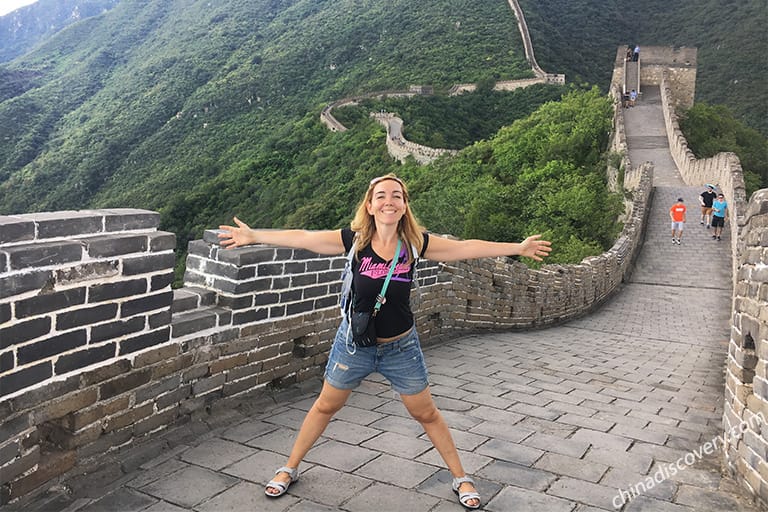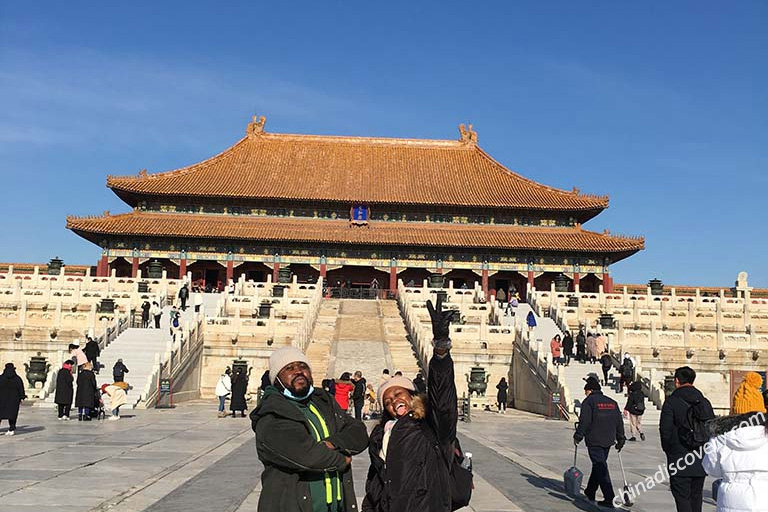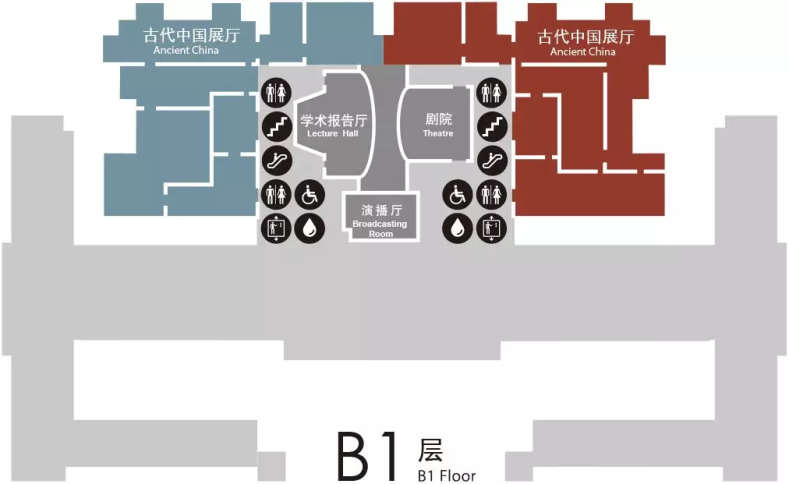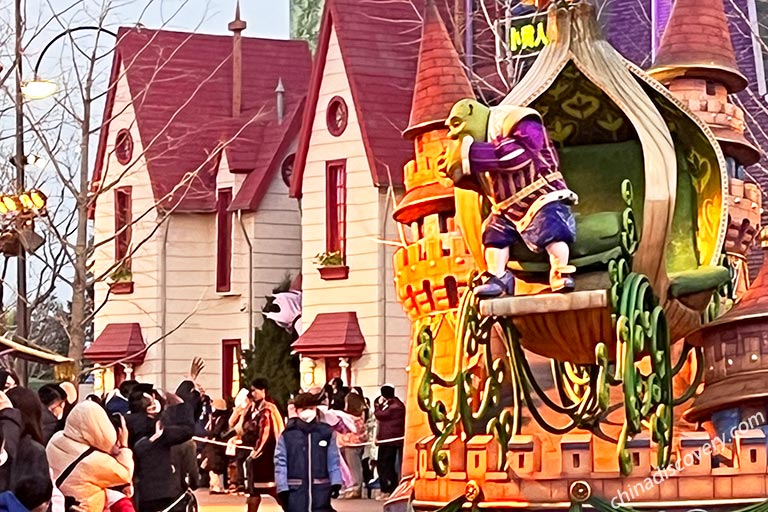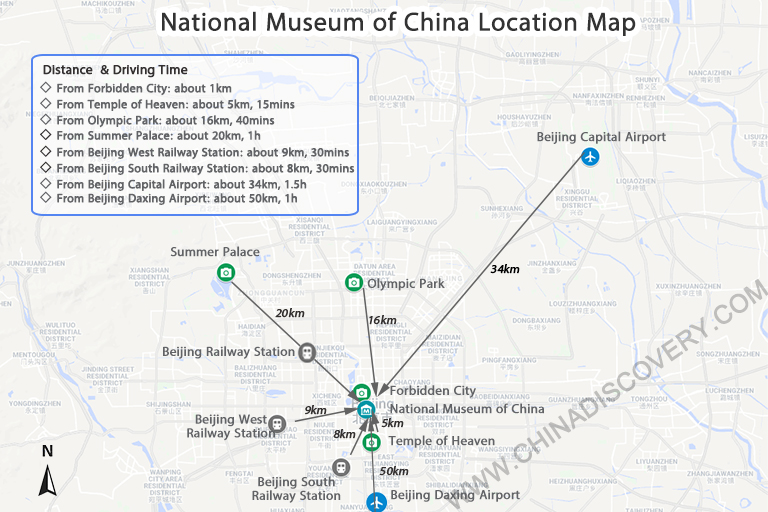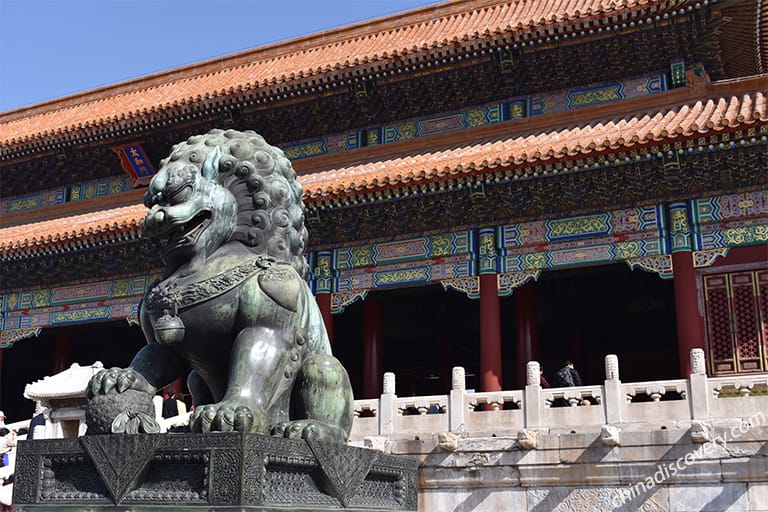National Museum of China
The National Museum of China is located on the east side of Tiananmen Square and the south side of East Chang'an Street, right at the city center of Beijing, facing the Great Hall of the People. It is a comprehensive museum focusing on collection exhibitions, archaeology research, public education, and cultural exchange with 1,430,000 collections and 48 exhibition halls.
The National Museum of China owns many of the priceless collections that can not be found anywhere else in China and the rest of the world. It is the third largest museum in the world and one of the richest collections of Chinese cultural relics. Its overall scale ranks first in the world museums. Thanks to its great location and massive collections, it is one of the most popular museums in the world.
▶ National Museum of China Entrance Fee
There are regular exhibitions and special exhibitions. The regular and permanent ones are Free for all the people who come to visit it with valid identity documents and you can collect your free tickets at the Ticket Office.
The identity documents include ID Card, student ID card, passport, Exit-Entry Permit for Travelling to and from Hong Kong and Macao, Mainland Travel Permit for Taiwan Residents, driving license.
If you would like to visit a special exhibition, you can book the ticket on the official website of National Museum of China, or purchase tickets at the Ticket Office, the service counter of the West Hall, and the entrance of the exhibition hall.
▶ National Museum of China Opening Time
From 9:00am to 17:30pm
Last admission at 16:30, closed at 17:30
Closed on Mondays (except for statutory national holidays)
Layout & Construction of National Museum of China
The National Museum of China is the third largest museum in the world with 65,000 square metres in area. The total land area is about 70,000 square meters. The building is 42.5 meters high, 4 floors above ground, 1 access floor, and 1 floors below ground.
The building consists of two zones. The two areas are: the north and south two exhibition areas separated by the central hall in the central axis. The west gate faces Tian'anmen Square, opposite the Great Hall of the People, and the north gate faces Chang'an Street. The North-South Art Corridor is 260 meters long and 28 meters high. At present, except for the negative second floor, all other floors are open to the public.
▶ Level -1: permanent exhibition Ancient China, public service areas, Broadcasting Room, Theatre and Lecture Hall.
▶ Level 0: the pathway, exhibitions.
▶ Level 1 & 2: North Galleries (N1-N4), South Galleries (S1-S5), the permanent exhibition The Road of Rejuvenation, public service areas and Central Hall (C1), West Hall, West Gate, North Gate.
▶ Level 3: public services areas, the permanent exhibition The Road of Rejuvenation, North Galleries (N8-N11) and South Galleries (S6-S10).
▶ Level 4: North Galleries (N16-N19), South Galleries (S11-S14), Central Hall 2 (C2).
Various Exhibitions to See at National Museum of China
The National Museum holds various kinds of exhibitions all year round including regular and permanent exhibitions and representative special exhibitions. Regular and permanent exhibitions ranges from exhibitions related to the history of the founding and development of P.R. China, to gifts from other countries to China. However, the most distinctive and most priceless exhibition recommended is a series of permanent exhibitions about ancient China, which have covered the most famous archaeological collections from every dynasty in China, representative unearthed cultural relics from almost every province of China. According to the different types of collections, the exhibitions are distributed in different areas from the negative first floor to the fifth floor.
Ancient China - Centerpiece of National Museum of China (Permanent Exhibit)
● Venue: Galleries N20 - N25, S15 - S18, S20 (Level -1)
"Ancient China" exhibits 2026 cultural relics, including 521 first-class cultural relics. It takes Dynasty replacement as the thread and precious cultural relics as the core of the exhibition, presenting the continuous political, economic, cultural and social development of Chinese civilization as well as China's foreign relations in different historical periods. Following the dynastic sequence, the exhibition can be divided into eight parts: the ancient period, Xia, Shang, and Western Zhou Dynasty (2070 BC - 771 BC), the Spring and Autumn Period (770 BC - 476 BC), the Warring States Period (475 BC - 221 BC), Qin and Han Dynasty (221 BC - 220 AD), Three Kingdoms Period (220 AD - 280 AD), Jin and Southern and Northern Dynasties Period (265 AD - 581 AD), Sui, Tang and Five Dynasties Period (581 AD - 979 AD), Liao, Song, Xia, Jin and Yuan Dynasties Period (949 AD - 1402 AD). By appreciating these exquisite exhibits in every dynasty, you can understand the general context of the development of Chinese culture and have a certain understanding of the cultural and artistic characteristics of each period.
Must-see collections including the world-renowned Sanxingdui bronze mask (about 3600-3100 years ago), Basin with a fish pattern with a human face (5000 BC - 3000 BC), the sacrificial Four-goat Sqaure Zun (1400 BC - 1100 BC), the vivid Tomb figurine of a storyteller in the Eastern Han Dynasty (25 AD - 220 AD), the Jade Dragon symbolizing authority in neolithic (about 5000 years ago), the majestic and solemn Houmuwu square cauldron (1300BC - 1046 BC), the exquisite Phoenix crown of the Empress Xiaoduan from the Ming Dynasty (1368 AD - 1644 AD), etc.
 Phoenix Crown of the Empress Xiaoduan (1368 AD - 1644 AD)
Phoenix Crown of the Empress Xiaoduan (1368 AD - 1644 AD)
Ancient Chinese Jades (Special Exhibit)
● Venue: Gallery S13 (Level 4)
At least 8,000 years ago, Chinese ancestors discovered a beautiful stone, jade. Ancient Chinese believed that jade is the quintessence of heaven and earth. It is sacred, often personified, and endowed with aesthetic values, even in modern times, some certain kind of jade is also expensive. The National Museum of China has more than 80,000 ancient jades, all of which are considered by scholars to be the most representative jades in China from the Neolithic (about 5000 years ago) to the Qing Dynasty (1616 AD -1912 AD). They reflect the traditions and aesthetic tastes of the ancient Chinese people.
Step down from the white marble base at the rear of the Hall of Preserving Harmony, a wide courtyard separates the outer court from the inner court.
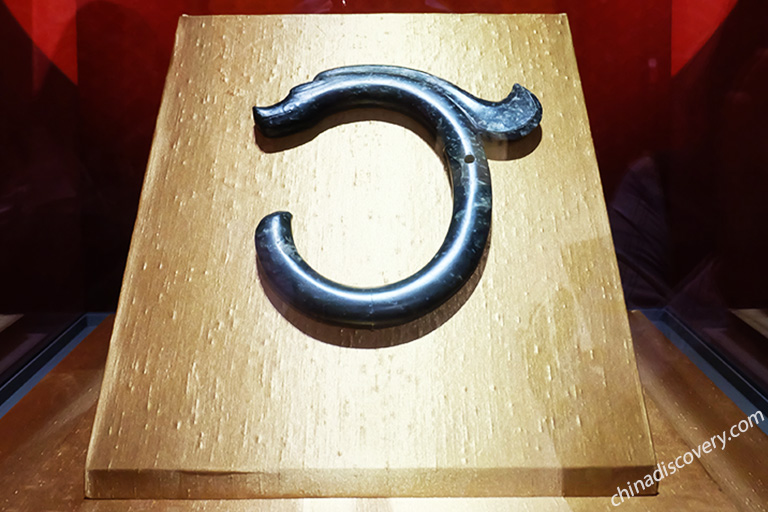 Jade Dragon (Neolithic Period about 5000 years ago)
Jade Dragon (Neolithic Period about 5000 years ago)
Ancient Chinese Porcelain Art (Special Exhibit)
● Venue:Gallery N17 (Level 4)
Chinese Porcelain has a long history. The National Museum of China has a rich collection of porcelains and has selected more than 100 pieces (sets) for display. The exhibits ranged from the Western Zhou Dynasty (1046 BC - 771 BC) to the late Qing Dynasty (1616 AD - 1912 AD). Among them, there are several masterpieces in the history of Porcelain, such as lotus-pattern Celadon of the Southern and Northern Dynasties (420 AD - 581 AD), olive-green porcelain of the Tang Dynasty (618 AD - 907 AD), cloud-dragon-pattern blue-and-white jar of the Yuan Dynasty, Peony-pattern blue and white trays, etc.
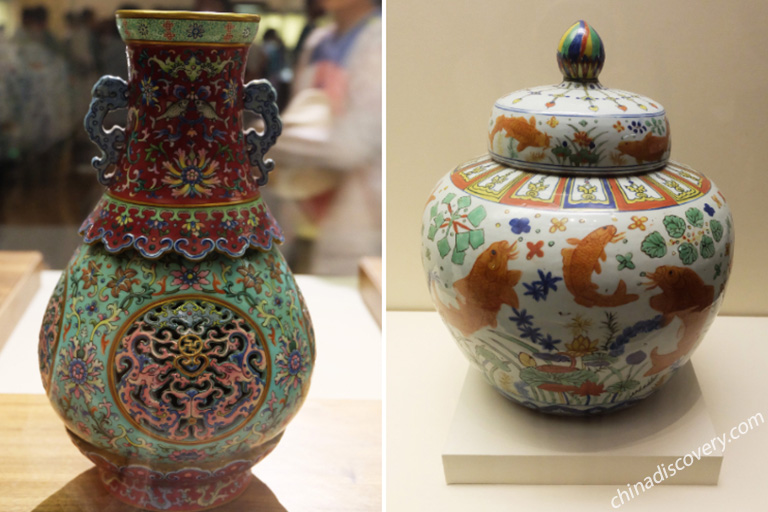 Multicolored Porcelain (1368 AD - 1912 AD)
Multicolored Porcelain (1368 AD - 1912 AD)
Ancient Chinese Money (Special Exhibit)
● Venue: Gallery S11 (Level 4)
The earliest money in China appeared at least in the Western Zhou Dynasty (1046 BC - 771 BC) and developed in the Eastern Zhou Dynasty (770 BC - 256 BC). During the Qin Dynasty (221 BC - 207 BC), the emperor unified various currencies. Chinese money is also famous for its excellent calligraphy and casting skills.
There are more than 1700 items on display, including early shells, knife-shaped coins, round coins and coins with a square hole in the middle. These coins have been used for more than 2000 years, and the machine-made copper or silver coins appeared in the late Qing Dynasty (1616 AD - 1912 AD).
 Ancient Chinese Money Exhibition
Ancient Chinese Money Exhibition
Ancient Chinese Buddhist Sculpture (Special Exhibit)
● Venue:Gallery N19 (Level 4)
After Buddhism spread into China around the 1st century A.D, it gradually reformed under the influence of Chinese culture. The themes, materials and crafts of ancient Chinese Buddhist sculptures vary from region to time. These sculptures show the evolution of Chinese Buddhist sculptures and inspire ancient Chinese people's understanding of Buddhist philosophy through artistic expression.
 Buddha Sculpture Exihibition
Buddha Sculpture Exihibition
Blanc De China - Dehua White Porcelain (Special Exhibit)
● Venue : Gallery N1 - N2 (Level 1 & 2)
Blanc De China or White from China is the name given to porcelains produced in Dehua Town where the procelains there are purely and warmly white with glossy glaze. The De White Porcelain exhibition holds over 400 ceramics and other cultural relics from the shipwrecks and sea trade as well as important ruins, archaeological data of shipwrecks, and related research findings along the Maritime Silk Road, as well as fineexquisite modern artworks. Based on porcelains, the exhibition presents Chinese ceramic system including production, transportation, marketing, etc., and its influence to the society, illustrating the flourishing sea trade development of ancient Chinese ceramics which can be dated initially back to the Tang Dynasty and Five Dynasties (618 AD - 979 AD), through the most prosperous the Song and Yuan dynasties (960 AD - 1368 AD) to the Ming and Qing dynasties (1368 AD - 1840 AD).
Where is National Museum of China
National Museum is located right in the city center of Beijing. It is very close to Tiananmen Square and reachable to Forbidden City within 15min on foot.
◣ Address: 北京市东城区东长安街16号, East side of Tian'anmen Square,16 East Chang'an Avenue, Dongcheng District, Beijing 100006, P. R. China.
• 1km from Forbidden City
• 5 km from Temple of Heaven
• 5 km from Beijing Hutongs
• 8 km (35 minutes' drive) from Beijing South Railway Station
• 10 km (40 minutes' drive) from Beijing West Railway Station
• 18 km (45 minutes' drive) from the Olympic Park
• 20 km (60 minutes' drive) from Summer Palace
• 34 km (45 minutes' drive) from Beijing Capital Airport
• 50 km (60 minutes' drive) from Beijing Daxing Airport
How to Get to National Museum of China
By Subway: You can take Metro Line 1 and get off at Tiananmen East Station (天安门东站) through Exit C or D or Metro Line 2 at Qianmen Station (前门站) and get out from Exit A or B. The National Museum of China is in between the two stations.
By Bus: There are lots of buses to National Museum, and the followings are 3 closest stops where you can get off and walk to the Museum within 10min.
Tian'an Men East Station (天安门东站 Pinyin: Tiananmen Dongzhan), Routes: 1, 2, 52, 82, 120, Sightseeing Line 2, Tourist Bus Line 1 and Tourist Bus Line 2.
QianMen East Station (前门东站 Pinyin: Qianmendong Zhan), Routes: 8, 9, 20, 22, 44, 673, 729, Special 2.
QianMen Station (前门站 Pinyin: Qianmen Zhan), Routes: 5, 8, 17, 20, 22, 48, 59, 66, 67, 69, 71, 82, 93, 120, 126, 301, 723, 729, Special 1, Special 4, Special 7, Special 11, BRT Line 1, BRT Line 2.
Travel with China Discovery
If you want to get rid of hustle of public transportation and troublesome navigation, you can book a private tour package which covers sightseeing, dining and transfer from us. Our local tour guide and driver will escort you to the National Museum with speed and convenience, and take care of all the details. You just need to focus on sightseeing.>>Contact Us Now
Attractions Around National Museum of China
Tiananmen Square
Tiananmen Square (天安门广场) is the heart of Beijing City and the largest center plaza in the world. It was first built in Ming Dynasty when Emperor Zhudi (朱棣) laid out the city of Beijing. It has been an imperial square enclosed by railings out the Forbidden Palace and civilians are forbidden to enter. As more than 500 years passed, Tiananmen Square became a diamond in the crown of Beijing. On 1st October 1949, Chairman Mao proclaimed the establishment of People's Republic of China in Tiananmen Gate. As a site of many important events, Tiananmen Square has a great political, historical and cultural significance.>>Read More
Forbidden City
Once forbidden and now permitted. It was an amazing experience visiting a huge palace once built by the Ming and Qing Dynasties. The cultural richness of china is truly reflected at this historical palace. Following the order of Emperor Yongle (Zhudi朱棣), Forbidden Citywas constructed from 1406, the fourth year of his reign. 14-years hardworking by one million civilian workers presented the largest ancient imperial architecture complex, 72 hectares area with 8703 rooms. It's truly a stunning masterpiece in Chinese architectural history.>>Read More
 Tiananmen Square
Tiananmen Square
 Forbidden City
Forbidden City
Other Recommended Museums in Beijing
By the end of 2018, there are 172 museums of various types in Beijing, which is a city with the second largest number of museums in the world. Apart from the most representative National Museum and the Palace Museum (Forbidden City). There are also other museums recommended, such as the Capital Museum, the Ming Tomb Museum, the Yonghe Palace Museum of Art, and the Beijing Museum of Ancient Architecture. If you are interested in art, you are also recommended to visit the China Museum of Fine Arts, the Central Academy of Fine Arts Museum. If you go to Songzhuang (宋庄) or 798 Art District, you will have more private museums to explore. ⨠Click to know more museums in Beijing. If you are a museum enthusiast, you're also highly recommended to go to other excellent museums in China - Top 10 Greatest Museums in China.
Useful Tips to Visit National Museum of China
① Before Entering
Your luggage and personal belongs shall be deposited after security checking.
The following items are not allowed to bring inside: Food and drinks, knives, lighters, compact discs, dangerous articles, pets.
② While Visiting
All the objects on display shall not be touched.
Visitors can not smoke.
Please keep your voice down and mute your phone.
③ Photo-taking Instructions
Photography is permitted for permanent exhibitions and on regular displays, but no flash, selfie stick or tripod. For temporary exhibitions, please observe signs in the galleries. If photo-taking is prohibited, obvious reminders will be put both at the entrance of and inside the hall; your should pay attention to such reminders or consult the staff inside the exhibition hall.
④ Facilities
Besides the exhibition area, there are also Café, Tea Room for you to rest and Gift Shop and Book Shop where you can buy exclusive gifts and souvenirs, replicas, luxury items including jewellery, tea set, silk scarves and books about ancient Chinese history, archaeology, art history, and collections.
How to Plan a Beijing Tour
As the capital city of China for centuries, Beijing is an internatinal metropolis with numerous historic scenic sites. Besides National Museum of China, you can also visit the Forbidden City to witness the royal buildings of the ancient China empire, hike on the incredible Great Wall, and wander along the traditional hutongs to experience the authentic local life...all of your dreams about Beijing can be tangible in our Beijing tours.
In only 2 or 3 days, you can have a trip in Beijing which will cover the most popular attractions - Forbidden City, Great Wall, Temple of Heaven, Summer Palace, Hutongs, which is available for to 144 Hours Visa-fre for Transit in Beijing. If you have more time, you can go for an in-depth Great Wall hiking or photography tour, and explore more attractions in the city.
Also, you can easily travel from Beijing to any other hot travel destinations in China by flight or train, such as Xian, Shanghai, Guilin, Lhasa, Hong Kong, etc. China Discovery has designed many classic China tour packages including Beijing for you. Let us customize one Beijing Tour including National Museum for you.
Recommended Beijing Tour
☛ 5 Days Beijing In-depth History and Culture Discovery
☛ 4 Days Classic Beijing Tour Package
☛ 3 Days Beijing Essential Short Stay Tour
☛ 5 Days Beijing Family-friendly Tour with Universal Studios Fun
For more excellent Beijing tours, please check Beijing Tour Packages - 6 Beijing Tours with Best Prices. We China Discovery will arrange a local tour guide and driver to escort you to the National Museum with speed and convenience and take care of all the details. Or if you have any ideas or questions, please feel free to contact us.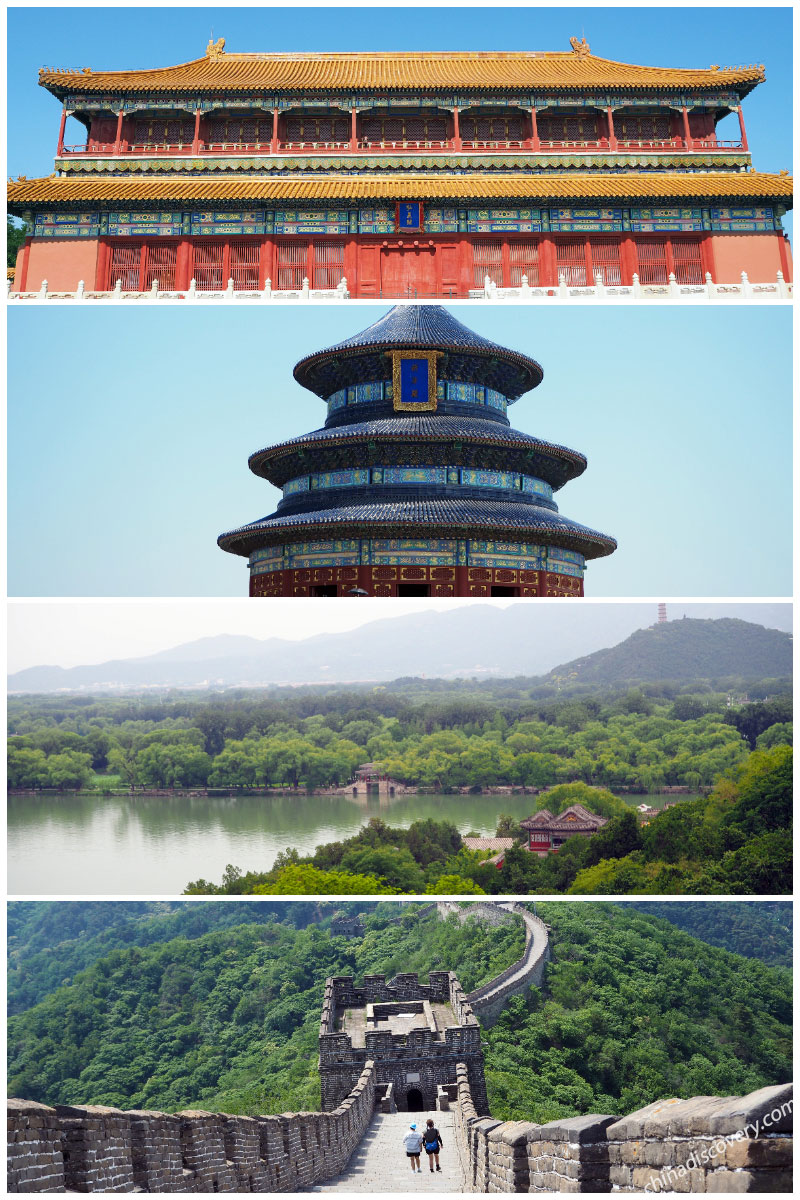 Worth-going Beijing Attractions
Worth-going Beijing Attractions
Keep Reading About Beijing Attractions
- Great Wall of China
- Mutianyu Great Wall
- Jinshanling Great Wall
- Forbidden City
- Summer Palace
- Temple of Heaven
- Tiananmen Square
- 798 Art District
- Jingshan Park
- Beijing Hutong
- Gubei Water Town
- Lama Temple
- Yandaixie Street
- Nanluoguxiang
- Beijing Central Axis
- Beijing Olympic Park
- Old Summer Palace
- Badaling Great Wall
- Huanghuacheng Great Wall
- Simatai Great Wall
- Juyongguan Great Wall
Top Beijing Tours & Travel Guide
- Forbidden City Tours
- Popular Beijing Tours
- Great Wall Hiking Tours
- Beijing Visa Free Tours
- Beijing Layover Tours
- Tpo 6 Beijing Vacations
- Beijing Family Tours
- Beijing Travel Guide
- Beijing Travel Articles
- Great Wall Trip Planning Guide
- How to Plan a Beijing Trip
- Things to do in Beijing
- Top Experiences Recommended by LP
- Featured Activities in Beijing
- How to Get to & around Beijing
- Weather & Seasons in Beijing
- Beijing Maps
- Beijing 144/24 Hour Visa Free
- Recommended Hotels in Beijing
- Beijing Photo Gallery
- Top Beijing Food and Snacks
- Beijing Shopping
- Beijing Nightlife
- Beijing FAQs & Tips
- Forbidden City Travel Tips
- Forbidden City Facts
- Forbidden City Map
- Hall of Supreme Harmony
- Imperial Garden
- Nine-dragon Screen
- The Gallery of Clocks
- The Treasure Gallery
- Palace Museum Collections
- How to Visit the Forbidden City
- Forbidden City Photography Tips
- Forbidden City Weather & Seasons
- How to Book Forbidden City Tickets
- How to Get to Forbidden City
- How to Transfer from Beijing Airports
Recommended Beijing Tours
Top 3 Beijing tours chosen by most customers to explore Beijing in the best way. Check the detailed itinerary, or tailor your own trip now with us.
Start planning your tailor-made holiday to China by contacting one of our specialists. Once inquired, you’ll get a response within 0.5~23.5 hours.
Customize a TripHave a question? Get answers from our travel experts or guests
- Your Question:
- Your Name:
- Your Email:
- Submit


























